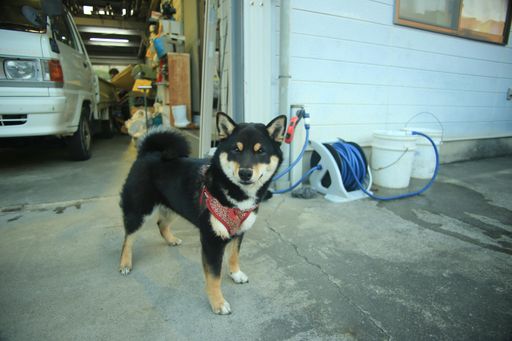Does your dog hesitate to chase their favorite ball? If so, there’s a chance your dog is suffering from joint pain. The same could be the case if your doggo:
- Faces difficulty rising from the bed
- Has reduced running, walking, or climbing stairs
- Licks or chews their own joints
There are, of course, more signs of joint pain in dogs. In this post, we’ll look into these signs in deep detail and also share what are some types of dog joint pain, the causes of dog joint pain, and treatment.
Let’s dive in!
Signs of Joint Pain in Dogs
Here's a breakdown of the key signs of dog joint pain to watch for:
Physical Signs
These signs are often the most readily noticeable and provide a direct clue about your dog's physical limitations.
- Limping or Favoring a Limb: This is a classic sign of joint pain. The limp may be present constantly or only after exercise or periods of rest. The severity of the limp can also vary, with some dogs barely putting weight on the affected leg and others having a slight wobble.
- Difficulty in Rising or Sitting Down: Observe how your dog gets up from resting positions like their bed or after lying down for a while. Does it seem like a struggle? They might hesitate, whine, or take extra time to maneuver themselves into a standing or sitting position.
- Stiffness, Especially After Rest: Pay attention to your dog's movement, particularly after periods of inactivity.Does your dog seem stiff or hesitant to move freely? This stiffness might be especially noticeable in the mornings after a long night's sleep.
- Visible Swelling or Warmth Around Joints: In some cases, inflammation caused by joint pain may lead to visible swelling or redness around the affected joint. You might also notice the area feeling warm to the touch.
Behavioral Signs
Changes in your dog's behavior can also be indicative of underlying joint pain. These behavioral shifts often stem from the discomfort they're experiencing.
- Reluctance to Exercise or Play: Dogs are typically playful creatures. If your dog becomes hesitant to engage in activities they previously enjoyed, like walks, fetch, or playtime, it could be a sign of joint pain that makes movement uncomfortable.
- Drastic Changes in Mood or Mood Swings: Pain can affect mood in dogs just like it does in humans. If your normally happy-go-lucky pup becomes grumpy, withdrawn, or easily frustrated, it could be due to joint discomfort.
- Decreased Interest in Activities Previously Enjoyed: You can observe this change in various ways. Your dog might show less enthusiasm for climbing stairs, jumping on furniture, or participating in activities that require agility. They may also seem less interested in social interactions with other dogs or playtime with their favorite toys.
Types of Joint Pain in Dogs
Broadly, there are three types of joint pain in dogs:
Osteoarthritis (Degenerative Joint Disease)
This is the most frequent cause of joint pain in dogs, especially older ones. It's a progressive condition caused by the gradual breakdown of cartilage, the cushioning material between bones within a joint.
It’s caused by:
- Wear and tear from everyday activities over time.
- Age: Cartilage naturally degenerates as dogs get older.
- Genetics: Certain breeds are predisposed to developing osteoarthritis.
- Previous injuries can accelerate cartilage breakdown.
Some of its most prominent symptoms are:
- Gradual onset of stiffness, especially after rest.
- Difficulty rising, climbing stairs, or jumping.
- Limping or favoring a limb, which may worsen with activity.
- Joint pain upon touching or manipulation.
- Muscle loss around the affected joint(s).
Rheumatoid Arthritis
Unlike osteoarthritis, which affects the cartilage, rheumatoid arthritis is an autoimmune disease that attacks the joint lining. This leads to inflammation, pain, and joint damage.
The exact cause of rheumatoid arthritis is unknown, but it's believed to be an abnormal immune response. Its common symptoms are as follows:
- Often affects multiple joints, unlike osteoarthritis which may be localized.
- Swelling, warmth, and pain around the affected joint(s).
- Joint stiffness and difficulty with movement.
- Fever and lethargy in some cases.
Traumatic Joint Injury
Accidents, falls, or strenuous activity can cause sudden joint injuries. These injuries can damage ligaments, tendons, or the joint capsule itself. Some common causes of traumatic joint injury include:
- Accidents like being hit by a car or falls from heights.
- Overuse injuries from activities like jumping or agility training.
- Ligament tears (commonly called cruciate ligament rupture in the knee).
Its symptoms are as follows:
- Sudden onset of pain, often with a specific event or activity.
- Limping or inability to bear weight on the affected limb.
- Swelling, bruising, or deformity around the injured joint.
- Difficulty with movement and decreased activity level.
Treatment Options for Joint Pain in Dogs
There's no single cure for joint pain in dogs, but fortunately, there are several treatment options. The best approach will depend on the type and severity of the joint pain, as well as your dog's age and overall health.
Here's an overview of some common treatment methods:
Veterinary Care and Diagnosis
The first step is always consulting your vet. They will perform a thorough physical examination to assess your dog's condition.
Depending on the findings, your vet may recommend diagnostic tests like X-rays, blood work, or joint fluid analysis to determine the underlying cause of the pain.
Medications and Supplements
In terms of medications, usually pain killers are suggested. Nonsteroidal anti-inflammatory drugs (NSAIDs) are commonly prescribed to manage pain and inflammation. Your vet will select the most appropriate medication and dosage for your dog.
To manage the pain in the long term, the vet may also suggest joint supplements. While research on their effectiveness is ongoing, glucosamine for dogs and chondroitin are natural substances that may help support joint health and cartilage function. They are generally considered safe and can be used alongside other treatments, like pain medication, to provide a comprehensive approach to managing your dog's discomfort.
Therapeutic Exercises and Physical Therapy
Physical therapy can be a valuable tool for dogs with joint pain. A certified veterinary rehabilitation therapist can design a personalized exercise program to improve strength, flexibility, and range of motion. This can help reduce pain, improve mobility, and slow the progression of joint disease.
Therapeutic exercises may include:
- Low-impact activities like swimming or underwater treadmill walking.
- Range-of-motion exercises to maintain joint flexibility.
- Strengthening exercises to build muscle mass around the affected joints.
Weight Management and Dietary Considerations
Excess weight puts additional strain on joints. Your vet can help you determine an ideal weight goal and recommend a weight management plan that includes a balanced diet and appropriate exercise. Some pet food companies also offer specialized joint health formulas that may be beneficial, potentially containing ingredients like glucosamine for dogs.
Surgical Options in Severe Cases
In some cases, surgery may be necessary to address severe joint damage or injuries. Common surgeries for joint pain include:
- Arthroscopy: A minimally invasive procedure to remove debris or repair damaged cartilage within a joint.
- Joint replacement surgery: For severely damaged joints, replacing the joint with an artificial one can be a life-changing option for some dogs.
Final Words
Identifying the signs of joint pain in your dog is the first step to keeping them mobile and happy. While there's no one-size-fits-all solution, early diagnosis and a combination of professional care, pain management, and lifestyle adjustments can significantly improve their comfort and quality of life.
Remember, a happy dog is an active dog, so take action today to support their well-being!



















